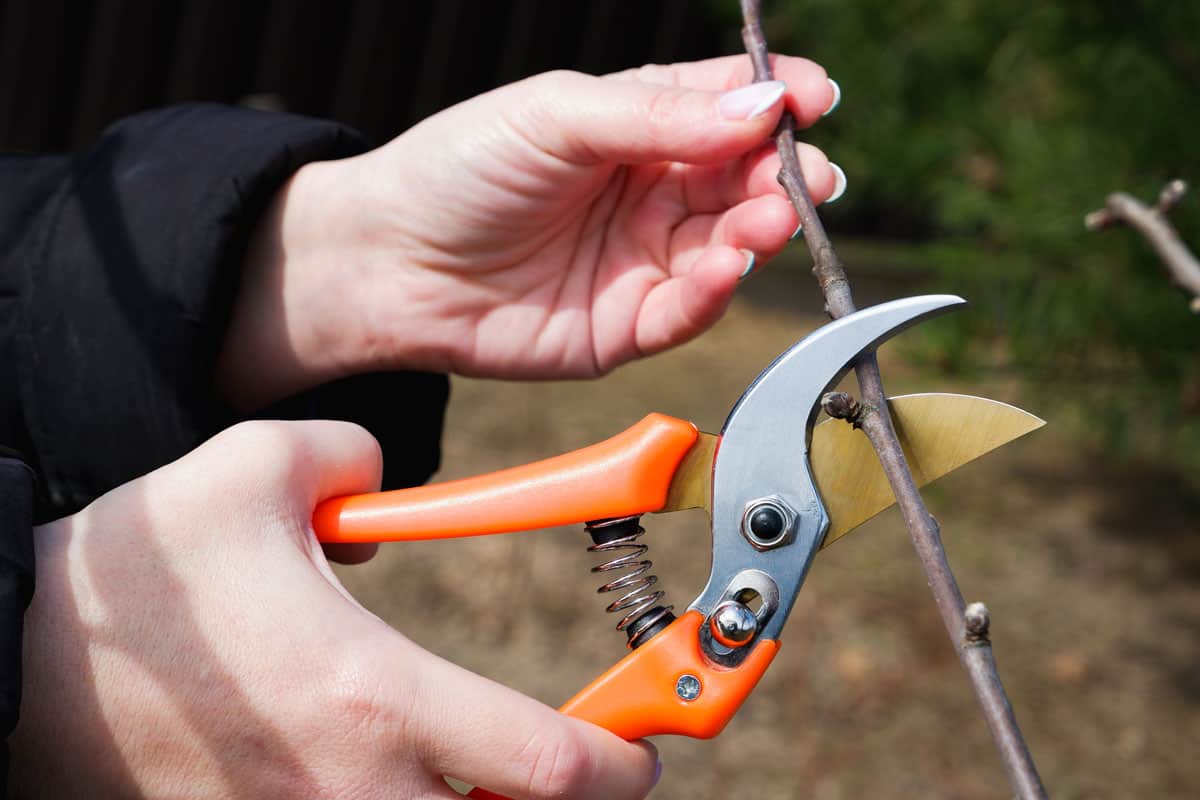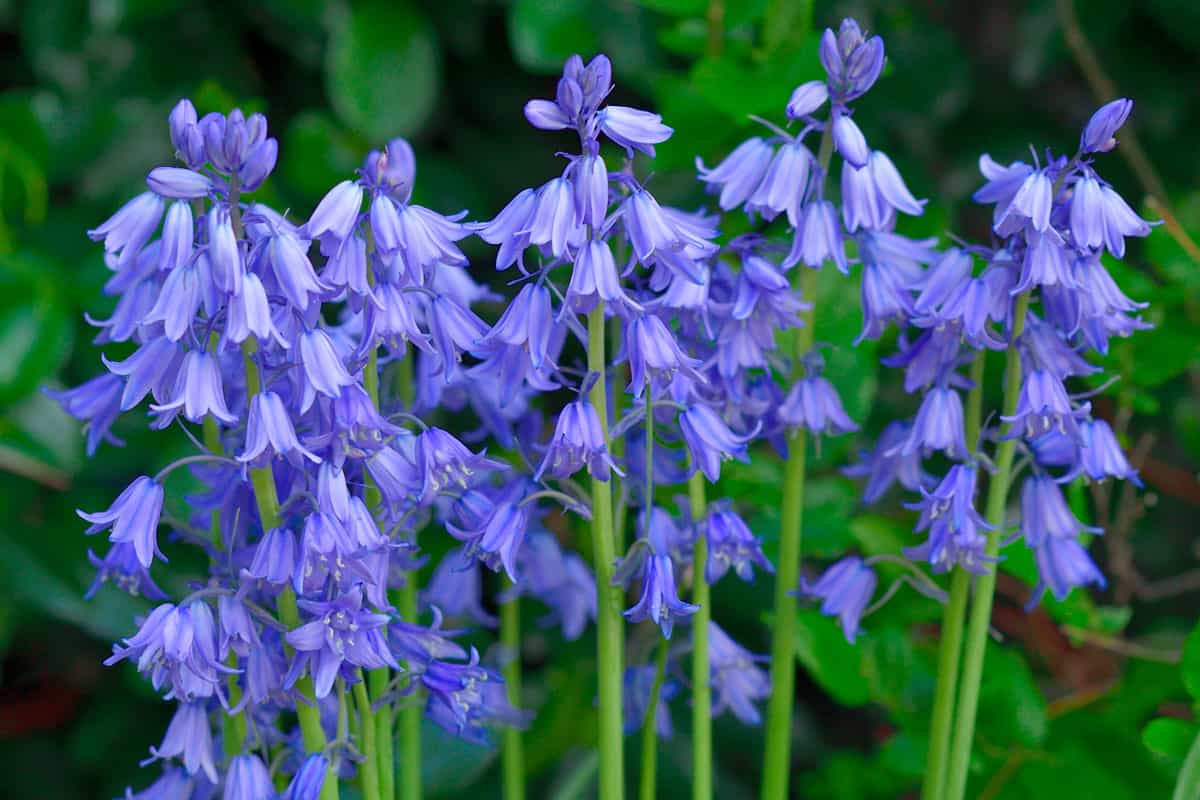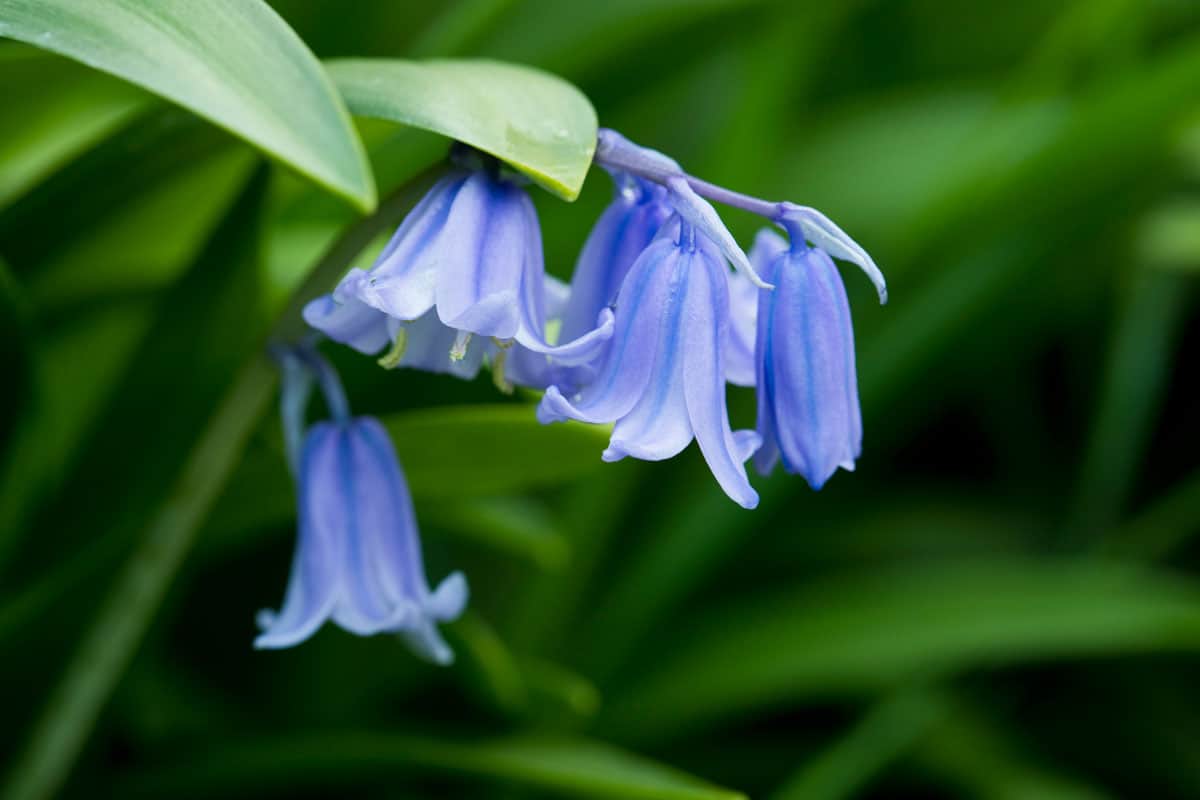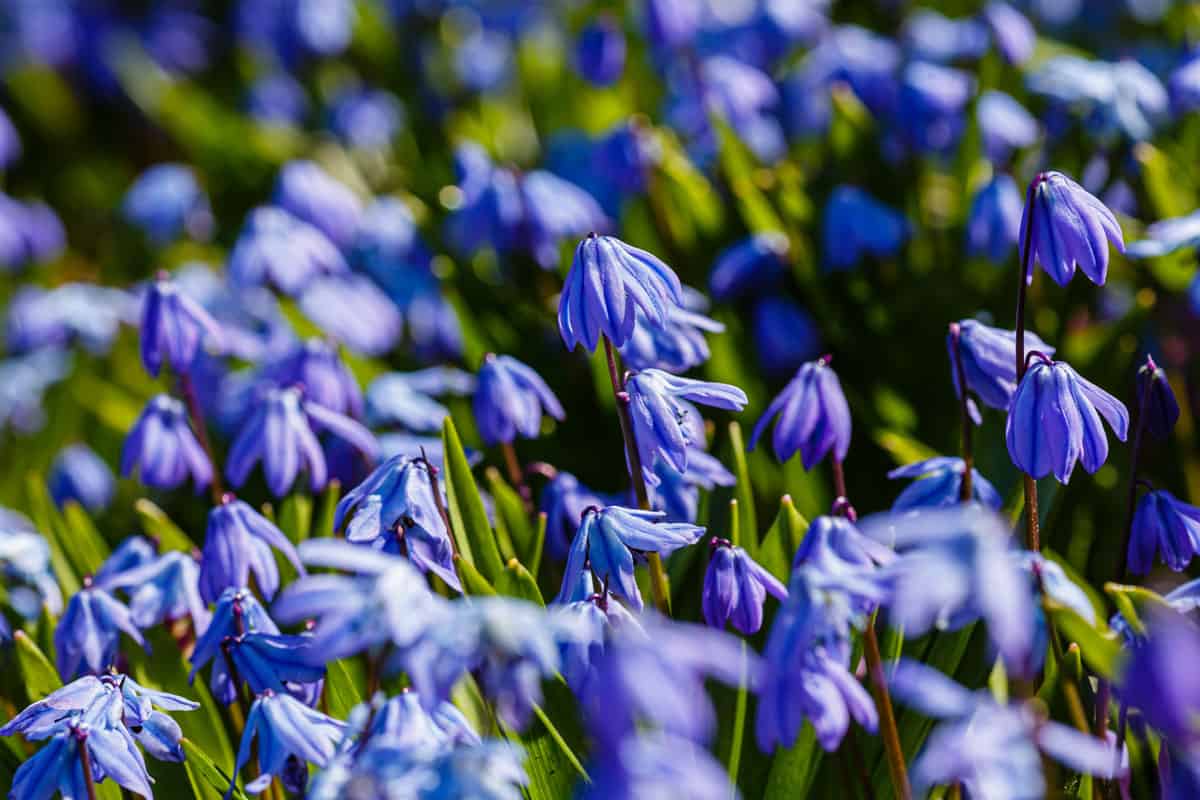Planting bluebells is a surefire way to get the peaceful, naturalistic atmosphere you're going for in your garden. Throughout the spring, their magnificent blue bulbs will turn your garden or yard into a vast expanse of blue. You might be wondering if you should pull up your dead bluebells, and when and how. To give you the answers, we conducted extensive research.
No, you should not pull up dead bluebells. The best way to remove your dead bluebells is by cutting them at the base using hand pruning shears.
You should cut them once the leaves have turned yellow. Cut them no earlier than necessary because the plant needs to empty all of the nutrients from its leaves to be ready for the upcoming blooming cycle.
The distinctive beauty of bluebells, with their arched stalks carrying exquisite bells of solid color, is one of the delights of this flower. Continue reading for guidance on how to prune and start taking care of your bluebells.

Pruning Of Bluebells
The number of bluebells that can grow depends on the amount of space that is available. Cut your plants back as soon as the leaves start to turn yellow to restrict their growth and keep them in check.
As we previously discussed, cut them off at the base once the plant has completely emptied all of the nutrients from them.
If you want to keep the bluebells from growing or keep the plant looking clean, flowers can be frequently deadheaded before they generate the seed.
If you want to start from seeds and preserve the plant's final flowers, only deadhead blossoms during the first week of blooming. You might be enticed to prune the leaves as the foliage starts to shrivel after flowering.
The nutrients from these leaves will, however, go back to the bulb that is underground, saving them for flowering the following season.

Leave them on the plant till they naturally fall off. Once they do, take them off and compost them.
Check out these hand pruning shears on Amazon.
Do Bluebell Bulbs Need To Be Dug Up?

The bulbs must be completely dug out if you wish to uproot them because they are deeply rooted in healthy soil. The bulbs are simpler to locate if dug up whenever the plants are in full foliage.
After removing the dirt from around the plants, add more soil until all the bulbs are discovered. Additionally, take out any runners you locate underground.
If you immediately drop these plants into a compost pile, they will shoot through the pile. By putting forth a little bit more effort, you can kill bluebell bulbs. Place the bulbs on cardboard sheets where they receive direct sunshine for a month.
When all the bulbs have dried out completely in the sun, place them all in a black plastic bag and store them under the deck or behind a shrub till the next spring. The bulbs ought to have died following that treatment, at which point it will be okay to compost them.
How To Develop Bluebells?

You'll need the right admixture of light, water, soil, climate, and fertilization to effectively grow bluebells in your yard. To help you understand how to enhance the growth of your flowers this season, let's look at each of these crucial variables in turn.
Light
Plant bluebells in areas with dappled shade to best mimic their native habitat. As their habitat suggests, they grow well when planted beneath moderately dense trees. Areas with afternoon shade and some morning sun are also appropriate.
Dappled light is desirable, but not all gardeners have access to it. These bulbs, fortunately, can withstand a variety of illumination situations. They are known to thrive in broad fields where they spend a significant portion of the day in full sun.
However, places that have at least little light during the day are preferable to areas in deep shade. They can also endure complete shade.
When you grow plants in pots, you also benefit from the convenience of shifting them to various lighting conditions as they perform.
Water
Bluebells may survive without a lot of water. Even though they require moist soil for healthy growth, too much moisture can damage the bulb. Give the plant lots of deep water after planting to encourage root growth.
Watering can be reduced after the first signs of spring growth occur. Water the area as soon as the top two to three inches of soil are dry. To help the soil retain moisture, spread a thin layer of compost on top.
This also mimics woodland settings, since leaves frequently assemble around the bulbs to generate a covering of plant materials that keeps moisture in the soil. Over time, the root system penetrates pretty deeply into the earth.
As a result, water deep within the soil that is not lost as rapidly to evaporation owing to exposure to the sun can be reached by the roots.
Your bluebells will consequently need less watering once they are well-established in the yard (after several seasons of development).
Soil
Bluebells, like most bulbs, should be cultivated in nutrient-rich, freely draining soil.
One of the most crucial elements is drainage, as poor drainage can decay the bulb and destroy the plant. That rules out using heavy clay soils unless you modify them with compost.
Bluebells are not picky about their soil conditions, except for drainage. They may endure for a very long time in sand or on soil that is just moderately productive.
Although a slightly acidic soil is preferred, bluebells can also thrive in slightly alkaline soils. You should aim for a pH of between 5.5 and 7.5 to be in good shape.
Climate and Temperature
English bluebells are highly resilient and may endure temperatures as low as -20F for brief periods. The following spring, when the temperature starts to drop, the plant gets ready to emerge from the dirt once more.
Although they can grow in Zones four to nine in harsh conditions, they do best in USDA Zones five to eight. When they are planted in the shady settings they prefer, excessive heat is not a major issue as long as they receive enough water to keep the soil moist.
Fertilizing
You can fertilize the plant after it begins to grow by using a special fertilizer designed for flowers that contains more potassium and phosphorus and less nitrogen.
This will ensure that you get the most blooms possible during the flowering season. However, if you are planting in nutrient-rich soil, fertilizer is not necessary.
The soil that has added compost or other organic waste will give the plants all the nutrients they need to flourish, even if it is employed as a mulch throughout the growing season.
Check out this organic fertilizer on Amazon.
Bluebell Varieties
An English bluebell Hyacinthoides non-scripta is the most popular member of the Hyacinthoides genus, which includes all bluebells.
Hyacinthoides hispanica, their larger, odorless cousins, are native to Spain. Compared to their English cousins, Spanish bluebells are said to spread much more quickly. They can take over a landscape and naturalize in your garden if they are not controlled.
Having both Spanish and English bluebells planted in the same place makes this problem worse. Hyacinthoides x massartiana, a species possessing traits from both varieties of bluebells, is created when these two plants interbreed.
Bluebells are largely regarded as endangered in the UK because of this combination. The best course of action is to keep to English bluebells if you do not wish to propagate them to other areas of your garden or the neighborhood.
Pests And Diseases
Pests and diseases are one thing you won't have to be concerned about when cultivating bluebells. Many plants are naturally resistant to a variety of pests and diseases, including those that are introduced by woodland animals like deer and rabbits, because of their native settings.
If you're extremely unlucky, the disease known as bluebell rust can be present in the garden. The leaves of plants with bluebell rust infection have tiny brown spots with yellow patches.
If required, cut the troublesome spots or apply an organic fungicide in accordance with the directions on the container. Even if you wait a long time to address this issue, your plants won't suffer any major health implications.
What Season Do Bluebells Bloom?

Although this varies from year to year, bluebells typically bloom from late March to early May. One of the final spring blooms before the woodland canopy closes and growing leaves block the sun, they are found in woodland areas.
Bluebells respond to a warm spring by blossoming early. Bluebells frequently appear first in the south of England, where it's a touch warmer than the rest of the UK, as with many other springtime phenomena.
Although the first bluebells may bloom there in late March, the majority of blossoming often lasts until April. The best time to view that recognizable carpet of blue is right now. Typically, flowers last a few weeks.
Final Thoughts
In this post, we covered the necessity of digging up bluebells. We also discussed the five potent perfect combinations for growing bluebells—specifically, lighting, water, soil, weather, and fertilization—as well as how and when to trim your bluebells.
You also learned about the several kinds of bluebells and their blooming seasons as well. Finally, you should now be aware of any potential diseases and pests that can affect your bluebells.
Before you go, you may want to read these other related articles:
Should You Cut The Flowers Off Laurel? [When And How To Deadhead]
Should I Cut The Dead Leaves Off My Monstera? [Inc. When And How To]


